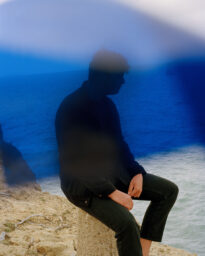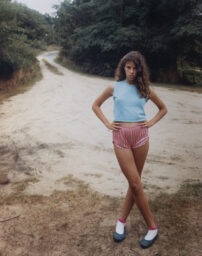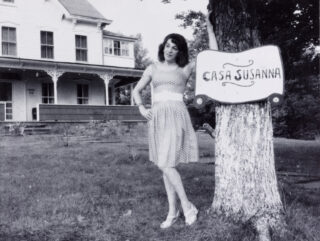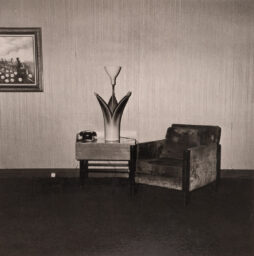Miranda July as a “professional woman” preparing to perform with cotton balls in her tights in The Amateurist, 1997. Photograph by Vanessa Renwick
On the day the world shut down, Miranda July received a strange phone call. It was Friday, March 13, 2020, and July was on her way to a café when she learned that her child’s school was going to close “indefinitely.” As she waited for a friend, stunned by the news that the pandemic scare was all too real, a telemarketer from the Philippines called with an offer for “services,” which July learned were related to promotional strategies for self-published authors. An artist and filmmaker whose breakout indie film, Me and You and Everyone We Know (2005), retains an enduring fanbase, July is also the author of the short-story collection No One Belongs Here More Than You (2007) and the novel The First Bad Man (2015), both New York Times bestsellers. But she humored her caller, who was following a script. At the end, July could have hung up. Instead, she said, “Can I ask you some questions now?”
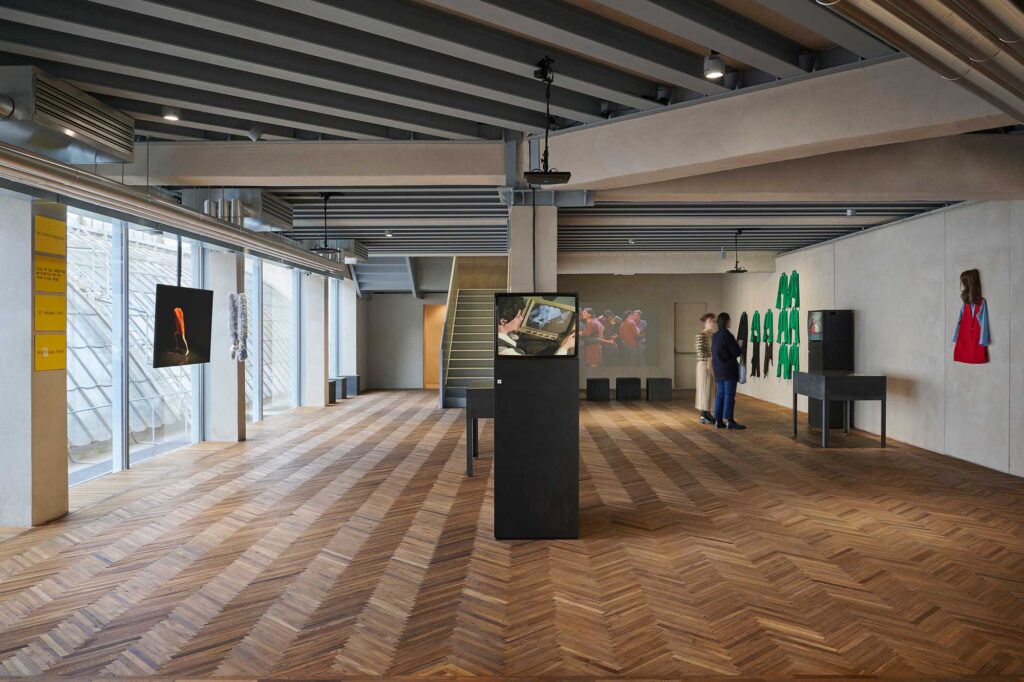
July has a knack for spinning an otherwise forgettable encounter into a beguiling narrative—visual, literary, or cinematic. At age seventeen, she staged a performance at a Berkeley, California, punk club based on her pen-pal correspondence with a man in prison for murder. She collaborated with Oumarou Idrissa, an Uber driver from Niger, on the conceptual, time-based sculpture I’m the President, Baby (2018), which concerned his insomnia and anxiety about getting a visa in the United States. For seven years, some eight thousand people participated in Learning to Love You More (2002–9), a web project July initiated with Harrell Fletcher, in which participants completed various assignments: “Make an encouraging banner”; “Write a press release about an everyday event”; “Recreate 3 minutes of a Fresh Air interview.”

After July began asking questions to Richie Jay Benedicto, the Filipino telemarketer, they struck up a six-month dialogue, exchanging ideas and performance-based images. July asked Benedicto, a trans woman, to respond to prompts, such as acting out a dream or naming “5 people you love and 1 you hate.” (Benedicto loves Jesus and Jamie Dornan, but confesses that she hates herself.) July was impressed by Benedicto’s openness and honesty; she paid her correspondent for her services and gave her directions, “like an actress on one of my sets.” Five images from of the resulting coauthored project, Services (2020)—first published in Germany by Süddeutsche Zeitung Magazin, followed by a deluxe, concertina-style book sculpture produced by the London publisher MACK—are now on view in New Society, July’s solo exhibition at the Fondazione Prada in Milan. The low-resolution camera-phone images, enlarged as prints and set in pale pink frames, amplify the pandemic’s mood of dislocation and intangibility: so close, yet so far away.

Photograph by Julieta Cervantes

New Society is curated by Mia Locks and spans July’s career, from video documentation of her performances to her newest work, an Instagram-based participatory experiment called F.A.M.I.L.Y. (Falling Apart Meanwhile I Love You) (2024). The exhibition is presented in the Fondazione Prada’s Osservatorio galleries, on the fifth and sixth floors of Galleria Vittorio Emanuele II, in the beating heart of Milan’s upscale shopping district. Posters, tickets, scripts, and cassettes are presented reverently in vitrines, while costumes—the wig from July’s short film The Amateurist (1997), the swimsuit from The Love Diamond (1998), the multiple iterations of an emerald-green blouse that audiences cut strips from during live productions of New Society (2015)—are affixed to the walls.
July is attuned to interpersonal dynamics, and the possibility of failure, especially when it comes to social interactions, animates her work.
The effect, at the outset, is to historicize July’s multimedia productions and feminist, punk sensibility, which Locks places in a lineage with Carolee Schneemann, Hannah Wilke, and Cindy Sherman. (Sherman contributed a conversation with July for the Fondazione Prada publication; characteristically, July returns Sherman’s questions with perceptive questions of her own.) Early in her career, July believed in the “radical” power of archives, as she recounted in the preview for the exhibition: “I realized that what is saved is remembered, and what is remembered becomes history, and history creates reality.” Power itself is both a theme and a tool throughout July’s work, given her collaborations with strangers and audience members. “Power, in July’s world, is not an object of possession, nor a zero-sum game,” Locks writes in the exhibition publication, noting the feminist preference for power sharing. “It is not something you own or wield; it is something to play with.”

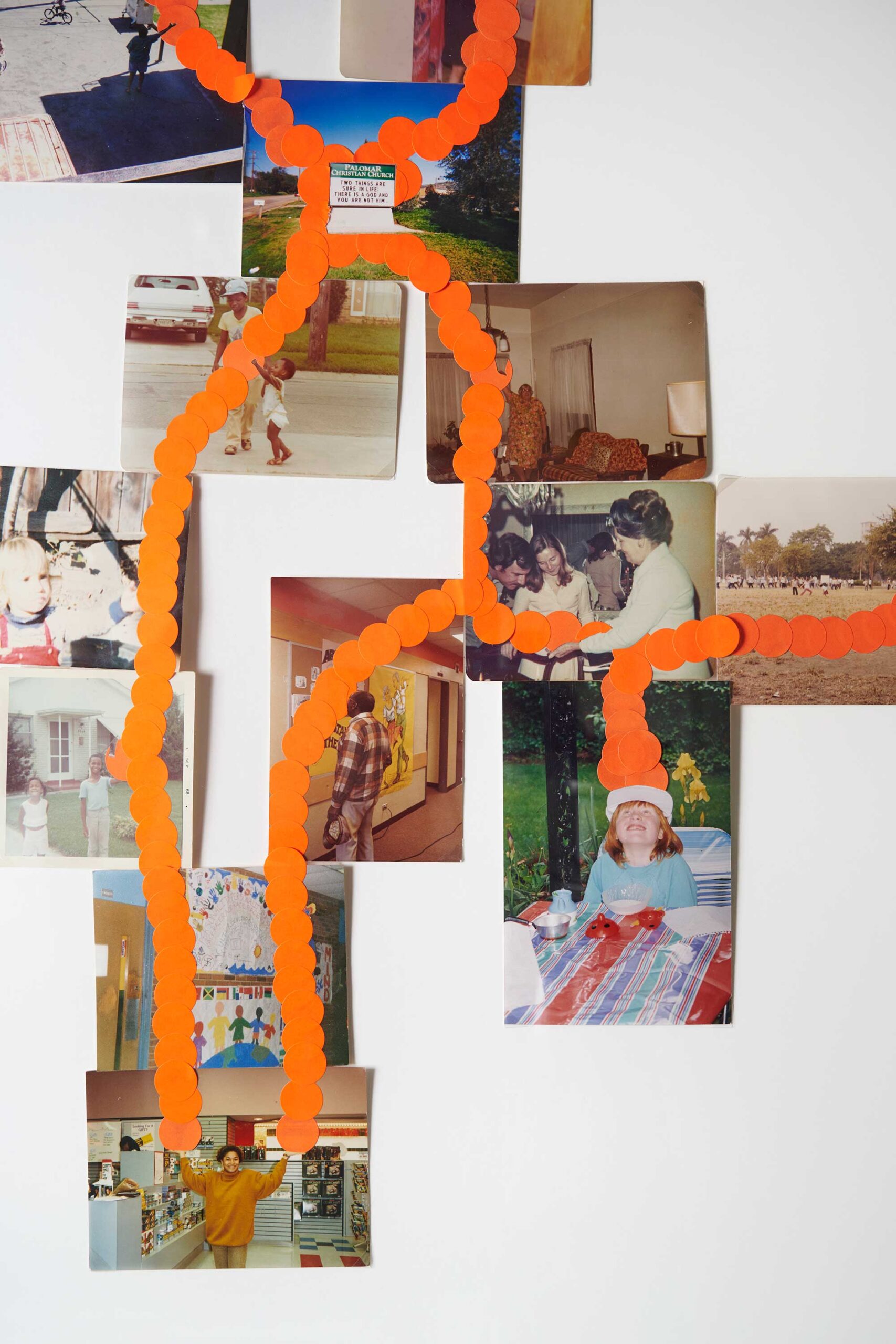
Photography and image making emerge in New Society as central to July’s art. For Two Things Are Sure (1993/2024), July collaged numerous small photographs salvaged from Urban Ore, a recycling center in Berkeley, where she grew up. She didn’t know any of the people in the images, but because the pictures were culled from Bay Area photo albums, occasionally she would recognize someone and have a hunch about where they went to high school. July deftly sequenced the pictures into a captivating network of associations and visual gestures, applying a circuit of Day-Glo orange stickers of the kind viewers will recall from Me and You and Everyone We Know, in which July plays Christine, an aspiring video artist who delivers a videocassette decked out with neon-pink stickers to an imperious contemporary art curator. The work’s title comes from a church sign—those vernacular prophesies seen in so much American deadpan photography—placed at the center of the composition, reading “Two Things Are Sure in Life: There Is a God and You Are Not Him,” a line July could have written herself. The piece, July said, is about the “energy that connects people, a sort of spirituality, almost.”
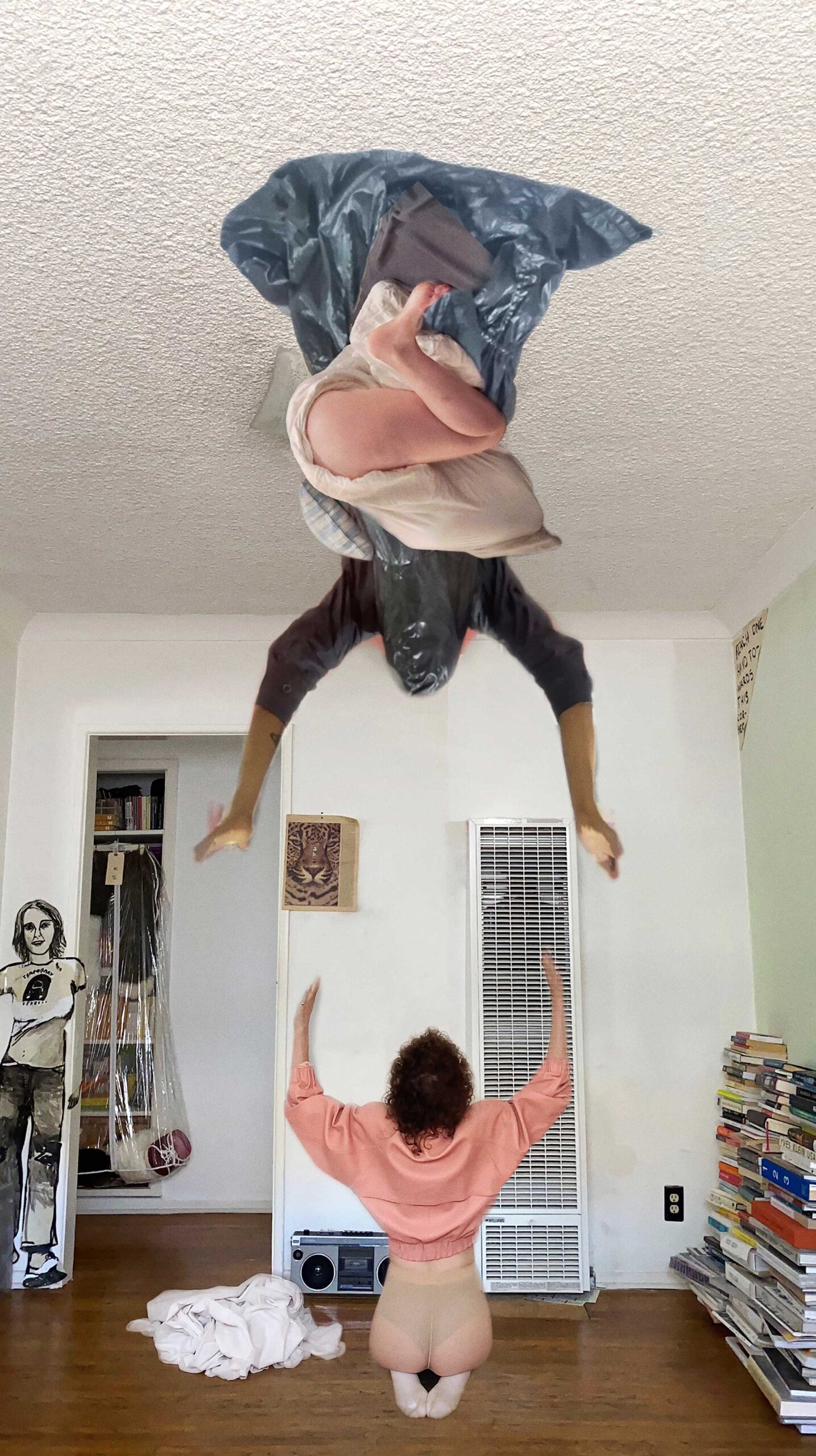
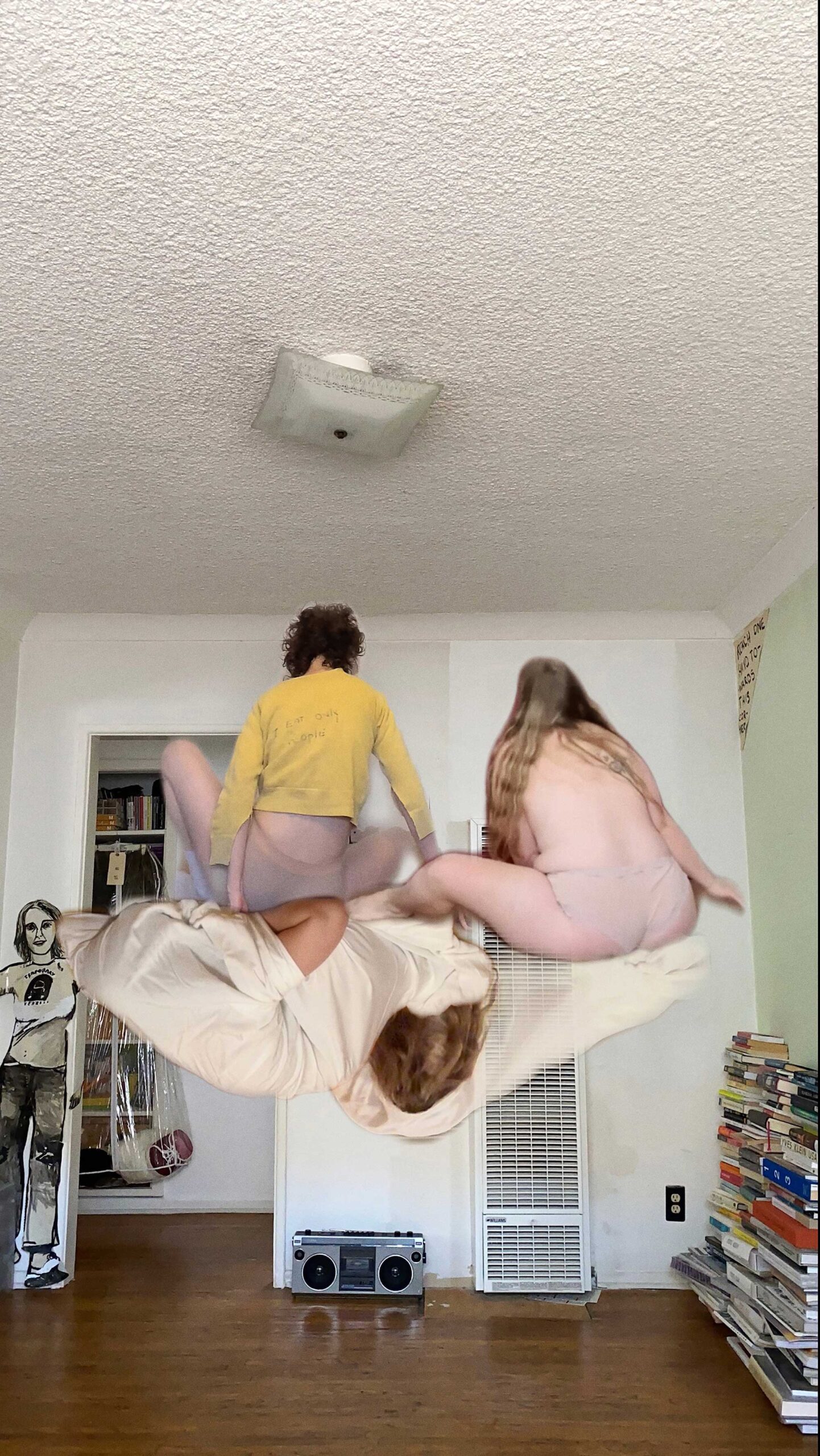
July made F.A.M.I.L.Y., a nine-channel video installation, by recruiting participants through a private Instagram channel. She asked seven strangers to film themselves making gestures that would leave room for July, who then used a cut-out tool to merge videos of herself with her cast members. She would give briefs, such as “You show me how you want to be touched, and I will figure out how to fit us together.” The results are a series of low-fi pas-de-deux, with July enacting often intimate movements with people of various body types, genders, and abilities. “I tried to create an image that gave us perhaps what we had wanted from the technology in the first place, from social media, from Instagram in particular, which I think we wanted to be looked at so lovingly that we felt OK,” July said, “like a new kind of sex or birth, like what you imagined sex would be like when you were a child, that would just merge. This perfect togetherness.” Yet the result is strangely cold and distancing. Though made this year, well post-pandemic, F.A.M.I.L.Y. seems to be a response to the problem of seeking intimacy at a time of separation. In an exhibition where July shows how early performance work led to feature films, F.A.M.I.L.Y. (which will continue to evolve as new video clips are added) feels like a sketch for a bigger idea.
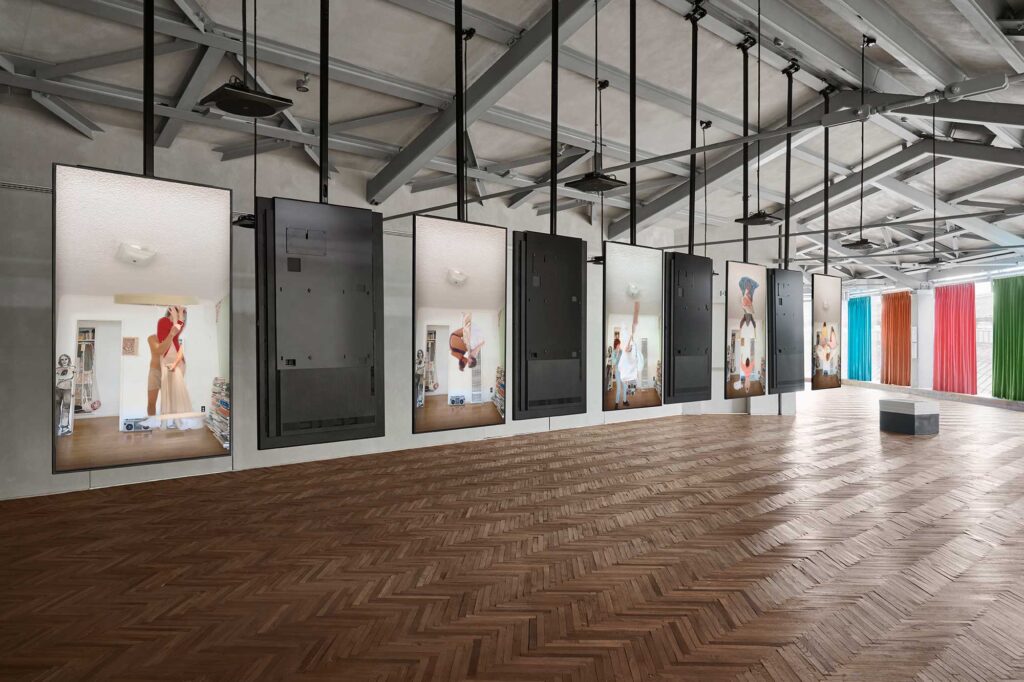
All works courtesy Miranda July Studio. Installation photographs by Valentina Sommariva. Courtesy Fondazione Prada
In 2020, Prestel published a monograph lining up all of July’s projects chronologically, complete with images of her sketchbooks, zines, press clippings, letters, video stills, installation views from the Venice Biennale, a collaboration with Roe Ethridge, wardrobe tests for The Future, and behind-the-scenes content from her film sets. Tellingly, her short-story collection and her novel were photographed as objects, and therefore appear as artworks. A copy of No One Belongs Here More Than You is open to a critical scene in the collection’s finest story, “Something That Needs Nothing,” about a young woman who, short on cash, takes up work as a peep-show performer. There’s a glass barrier between the narrator and her client, who speak over the phone. It’s a metaphor for July’s singular method of building a performance from the simplest of materials: the glass like the lens of a camera, the words spoken through the phone like lines from a script. July is highly attuned to interpersonal dynamics, and the possibility of failure, especially when it comes to social interactions, animates her work. New Society shows a sui generis artist taking risks in every direction. Risk can feel almost “devotional,” July tells Cindy Sherman in their conversation. “Risking and letting go.”
Miranda July: New Society is on view at the Fondazione Prada Osservatorio, Milan, through October 14, 2024.
























